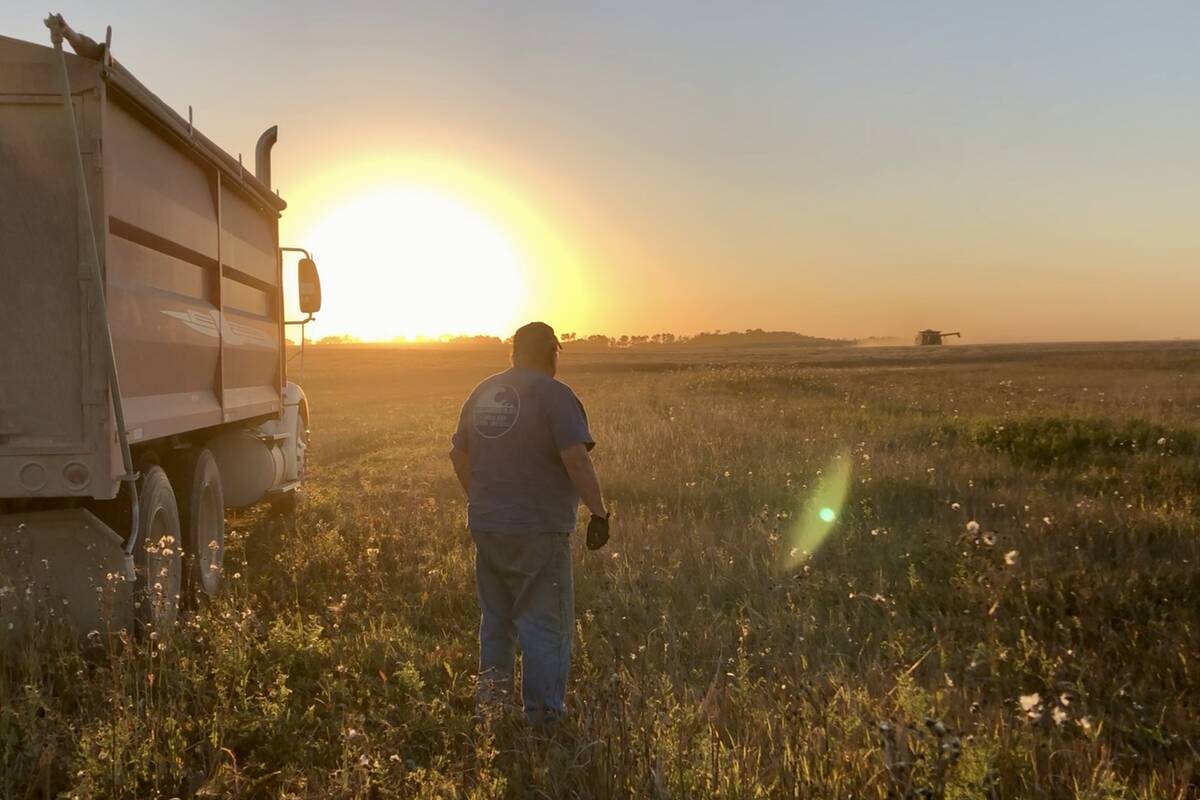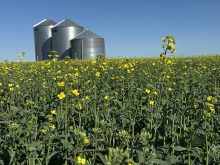A decade ago a 600-sow barn in Saskatchewan was considered a big industrial operation.
Now it’s seen as an entry-level facility in an industry that isn’t too friendly to little guys.
Florian Possberg, operator of Big Sky Farms of Humboldt, Sask., says that local investors who recently lost in bids to buy a bankrupt hog network’s barns piecemeal are probably better off with him winning the contest.
“For people to lose money is unfortunate. To turn around and buy them and potentially lose money a second time would be even more tragic,” said Possberg, whose company is taking over the 16 production facilities of the Community Pork Ventures network, which was originally organized by the Quadra Management group of Outlook, Sask.
Read Also

VIDEO: Bittersweet harvest for this family farmhand
Bruce Burnett helps his brother harvest wheat and canola for the last time on the family farm in Manitoba where they both grew up.
Quadra built its system by organizing local groups of investors who would combine their money to build a barn system that Quadra would manage. Many of the local investors were farmers who hoped to benefit by selling feed to the barn, receiving manure as fertilizer and by receiving dividends.
“I wonder (about the chances) of a 600-sow, stand-alone operation trying to make it through this competitive environment,” said Possberg.
He won the bidding for the barns of Community Pork Ventures, beating an undisclosed number of competing bids.
Big Sky Farms will now be able to produce 18,000 hogs on the Prairies. Three of the barns are in Manitoba and the rest are in Saskatchewan.
Even though hog farmers have experienced good times in the past year and a half, low prices in most of the years since the 1998 hog price collapse have driven many small producers out of the industry.
They have also driven some of the biggest operators on the Prairies into selling out or bankruptcy, including Community Pork Ventures.
The Manitoba hog industry was rocked by Premium Pork’s sudden demise last year, while Saskatchewan Wheat Pool sold off its Heartland network of barns.
The same phenomenon is occurring in the United States.
Many mid-sized hog operations have sold to former competitors, either choosing to get out or being pushed into it by their creditors.
Recent prices have helped the buyers.
“A fair amount of profit has been made recently and that gives firms the wherewithal to do it,” said Ron Plain of the University of Missouri.
Most hog farms with 1,000 or fewer sows see the writing on the wall, but have no way to go on as they are.
“Do I take on more debt and keep expanding, or do I sell my operation to somebody else?” Plain said.
Many hog producers would rather expand by buying existing barns than building new ones, he said.
“You don’t have to worry about permits and approvals.”
Possberg doubts that small groups of local investors would be able to profitably produce pigs in today’s industry. But he claims he should be able to make money with the same assets because in the hog game, bigger is definitely better.
“We sell into seven markets on a weekly basis. We can move semi-loads from one packer to another. We can match up the size of the hogs for the packer’s needs. We can match the specifications,” said Possberg.
“That’s really difficult if you only have a semi-load a week, because everything you produce goes into one load.”
The hog industry is based on 600-sow units because that many sows will produce about 200 market hogs per week every week. That will fill one truck.
Some may be surprised to hear a 600-sow unit described as a relatively unsophisticated operation, but there has been a steady trend in the North American industry toward bigger systems.
That extra heft has been needed to match the extra demands that packers have put onto producers.
“We’re in a business of very tight margins,” said Possberg.
“If you can add 25 cents to each hog, that’s pretty significant. By matching hogs and marketplace there’s a lot more at stake than that.”

















